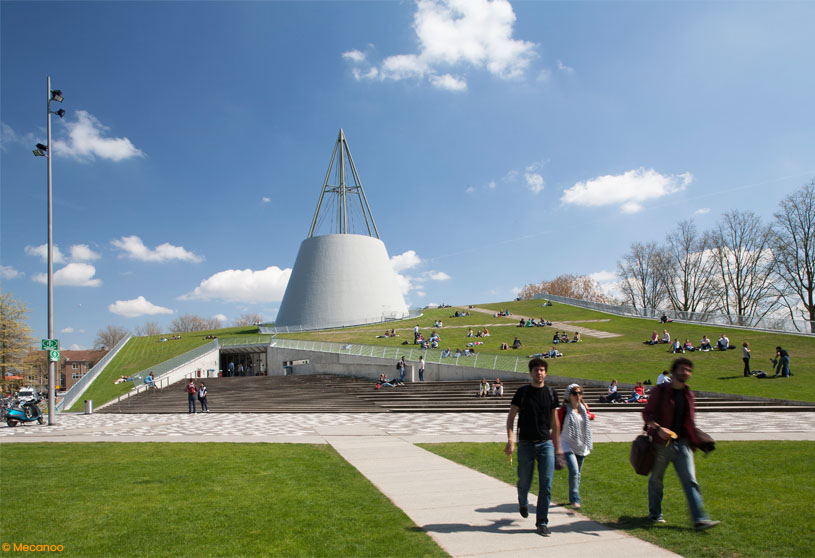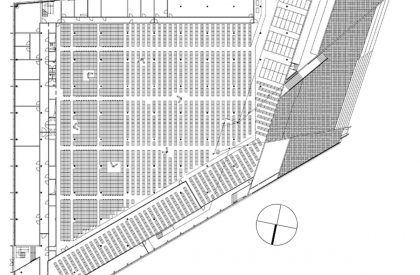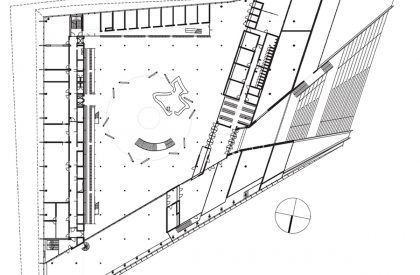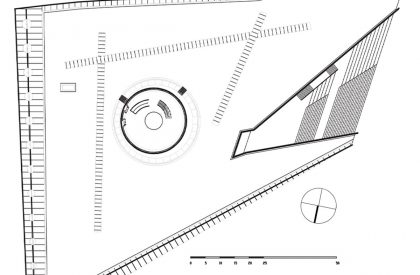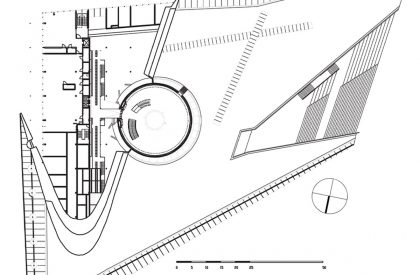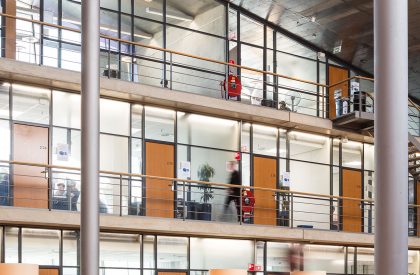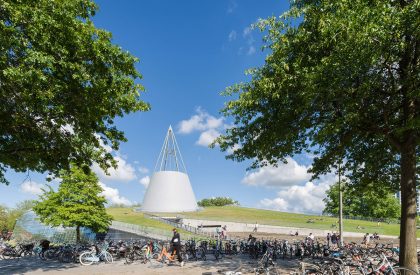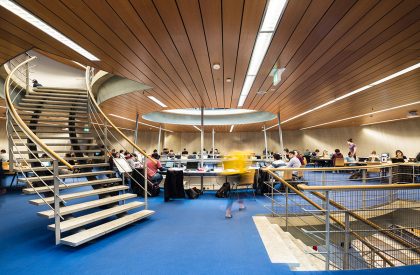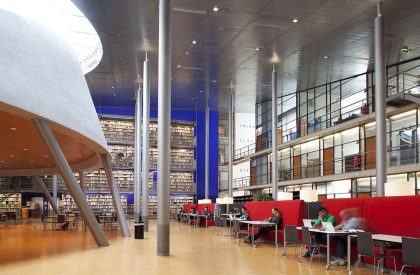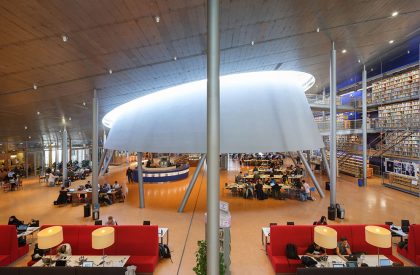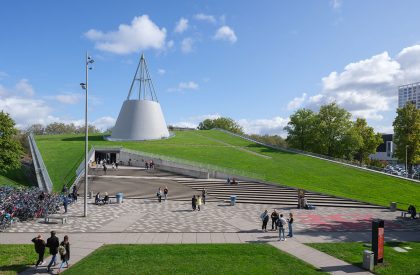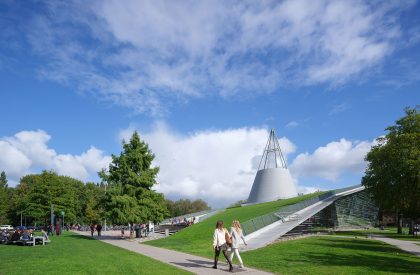Excerpt: In the Library at the Delft University of Technology designed by Mecanoo the university needed a campus atmosphere: lawns with flowers and trees where students and professors meet informally on broad stairs. A modern library is served by computers, and most of the books are stored in basements. It is a building where technique is displayed. In this way, the programme was formulated.
Project Description
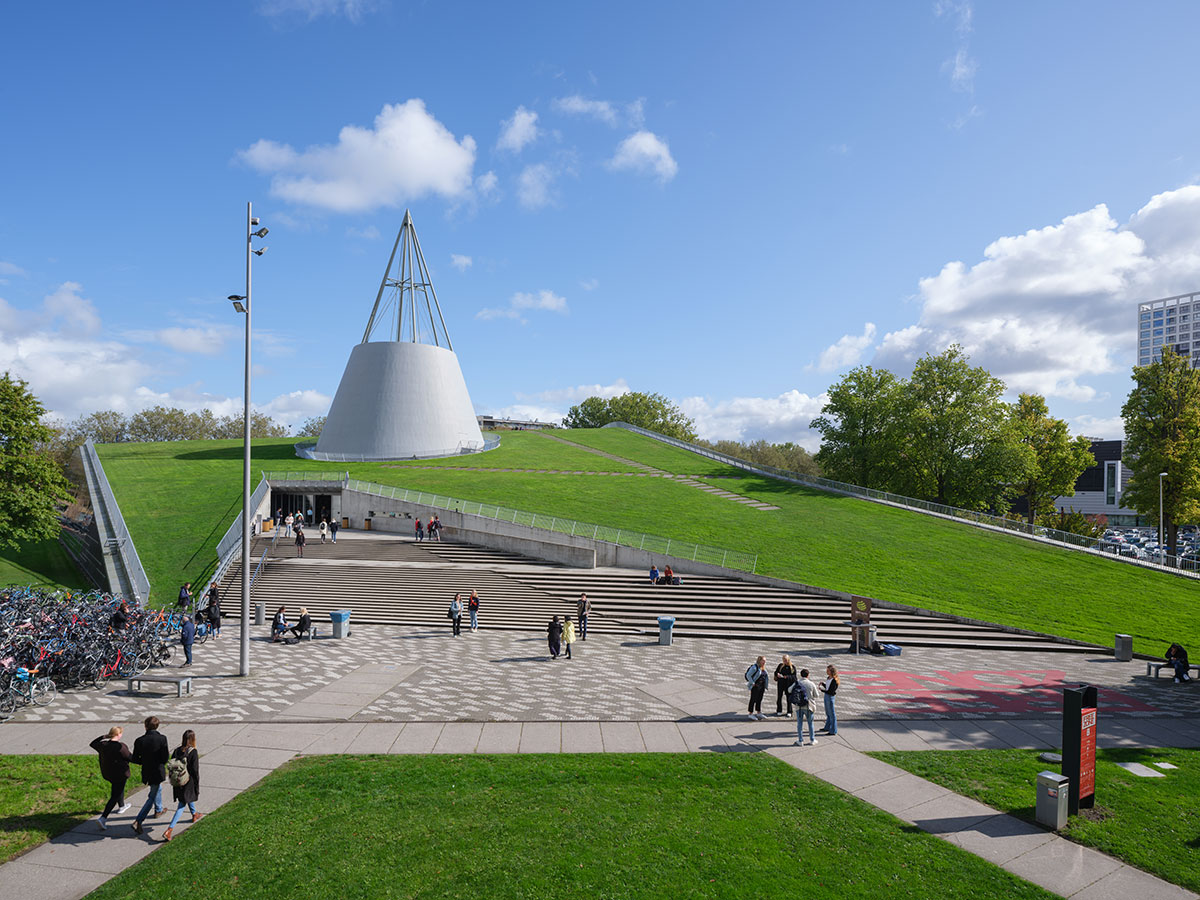
[Text as submitted by architect]
Campus
The fascinating site for the new library on the 1960s campus of the Delft University of Technology is overshadowed by a large, brutalist concrete auditorium from Van den Broek & Bakema. The university needed a campus atmosphere: lawns with flowers and trees where students and professors meet informally on broad stairs. A modern library is served by computers, and most of the books are stored in basements. It is a building where technique is displayed. In this way, the programme was formulated.


Glass and Grass
The Van den Broek & Bakema auditorium sits like a huge frog in the green grass. The vast lawn is lifted on one edge like a sheet of paper and shapes the roof of the new library. The grass roof is freely accessible for walking and lounging, creating a new amenity for the whole campus.

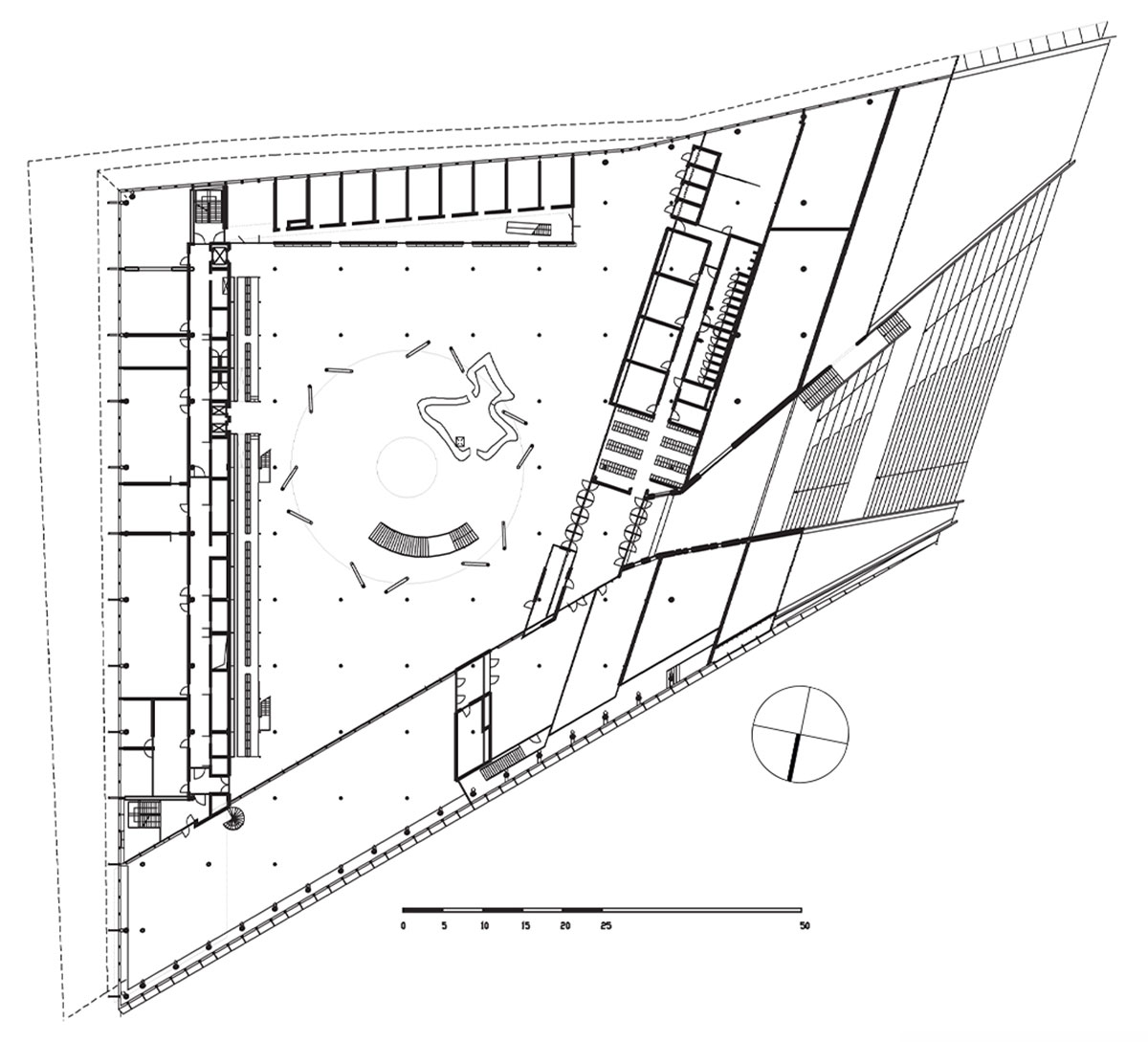
The roof is supported by slender steel columns in a huge hall enclosed with canted, fully glazed walls. The base of the slope to the west is marked by a broad flight of steps leading up to a recessed entrance. A huge cone pierces the green expanse. Supported by splayed steel columns, the cone houses four levels of traditional study spaces connected by a helical stair. Within the cone, a central void provides daylight from a glazed roof to the internal reading spaces. Extending forty metres above grade and floodlit at night, the cone acts as a beacon on the campus day and night.
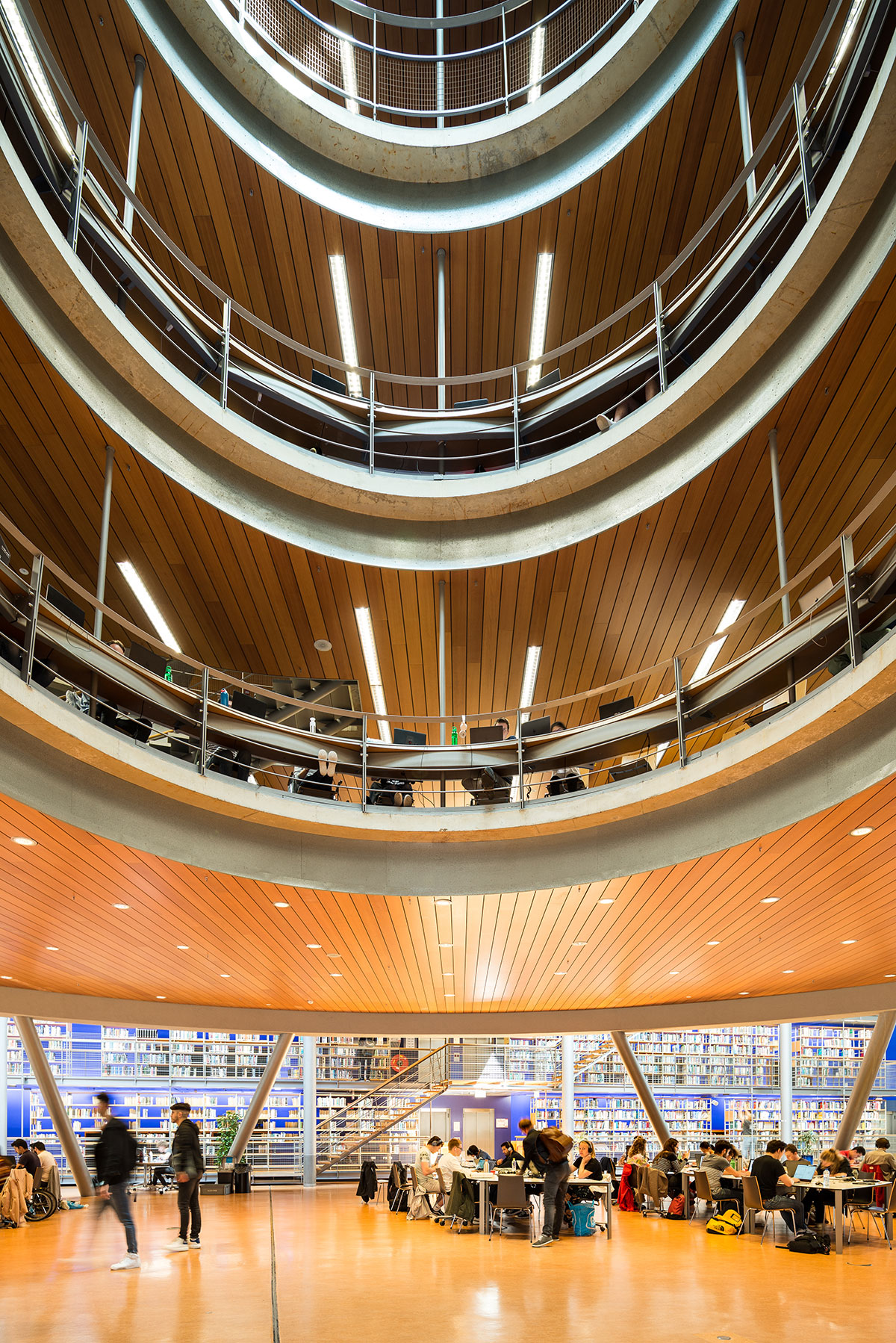
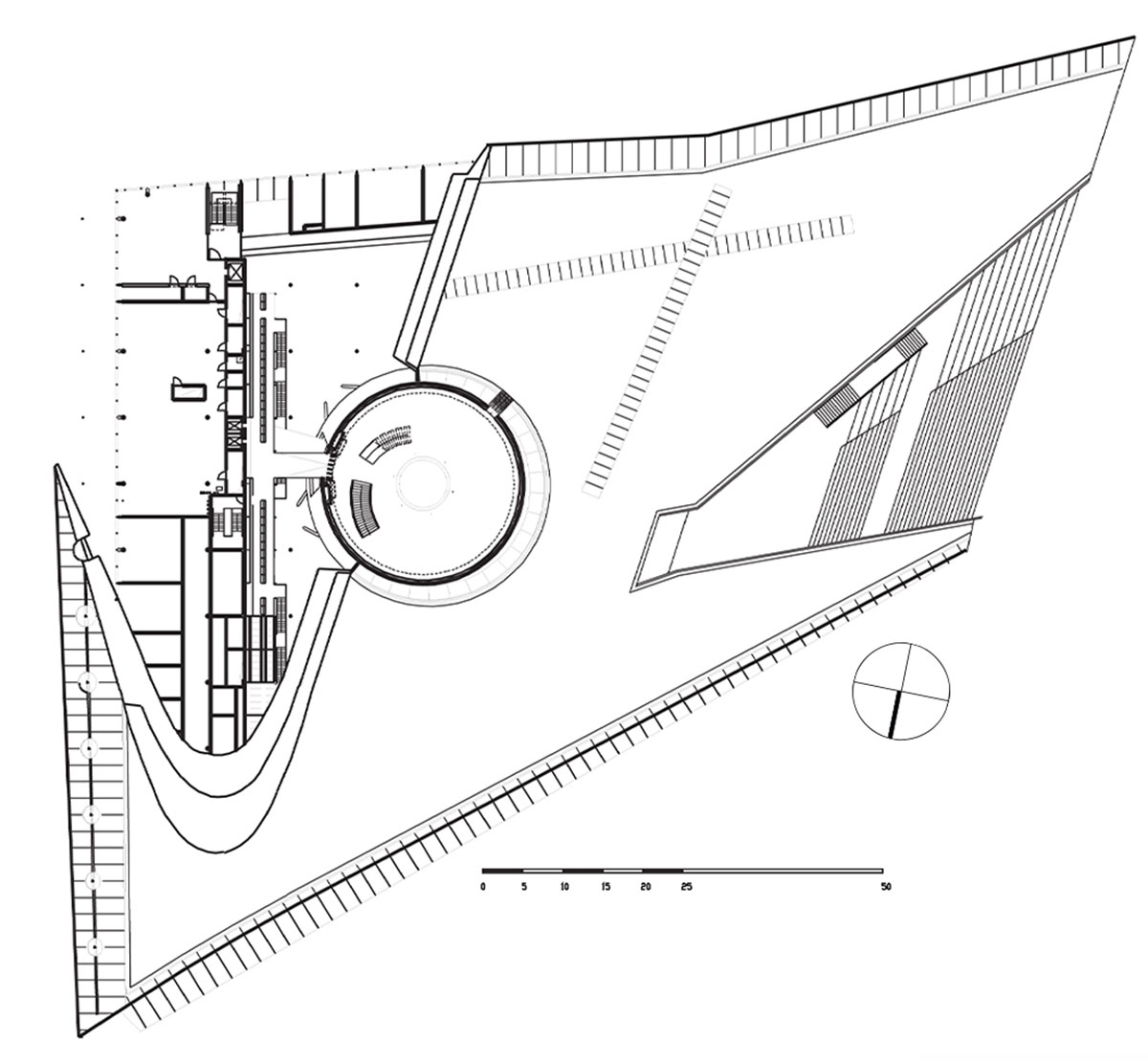

The new library reveals itself as a building of glass and grass. A building of the future, where 300 of the 1000 study places are equipped with terminals. The conditions of the ‘electronic highway’ have been fulfilled, but there is also sufficient space for smelling and feeling the books.
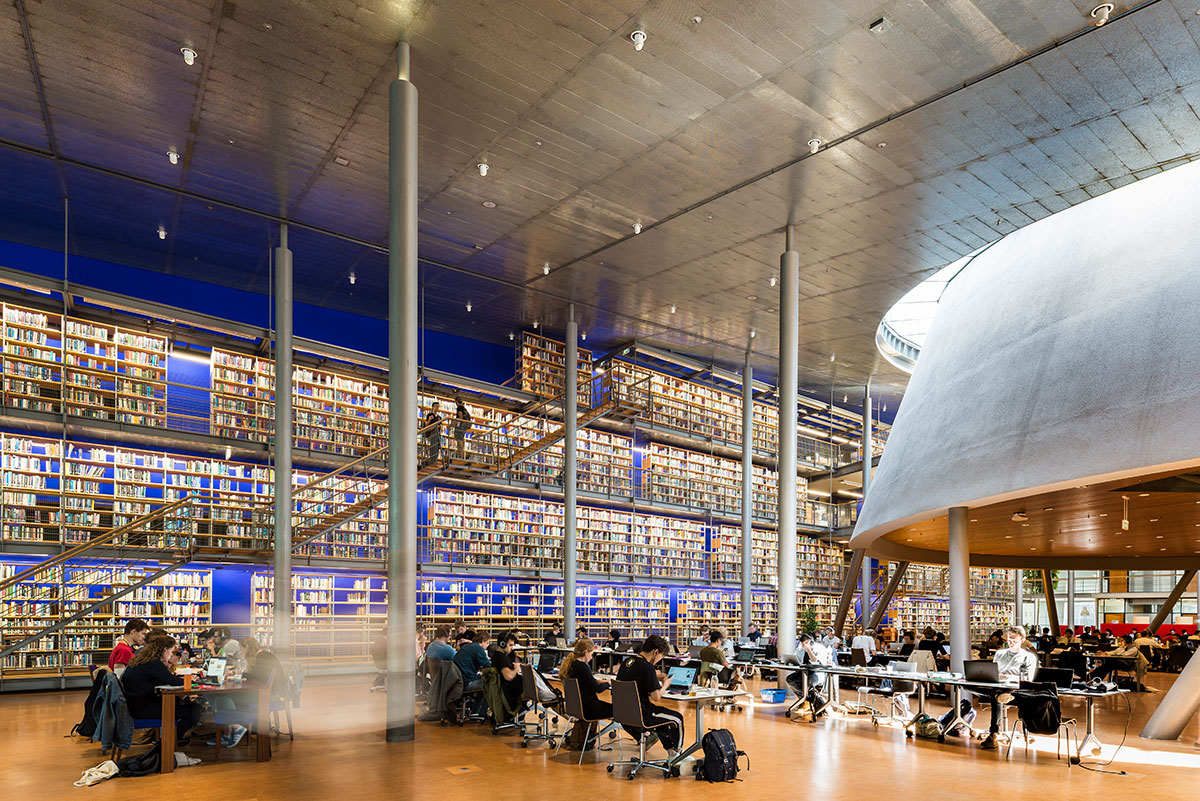
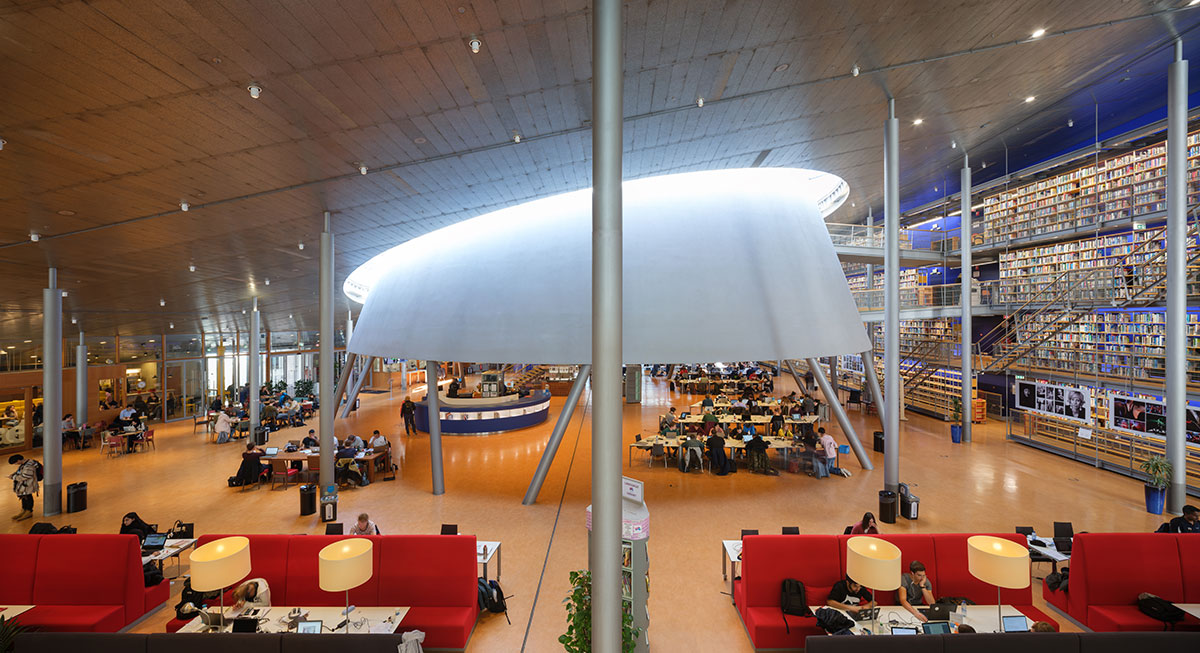
Hanging bookcase
The interior of the library is characterised by an enormous spaciousness, thanks, particularly to the large, central hall. The atmosphere in the building is warm. The floor has the colour of the Sahara and the furniture is made of warm MDF board. The most requested books are housed in a four-storey high bookcase hanging in front of a deep blue rear wall. The hard, metal ceiling is softened by the light coming from the columns. The lower part of the columns consists of gratings through which warm air is blown into the building. Via glazed facades and interior walls, a necklace of glazing placed around the cone and the glazed roof at the apex of the cone, daylight penetrates deep into the building. The transparency that is thus created makes the building bright and surveyable.
